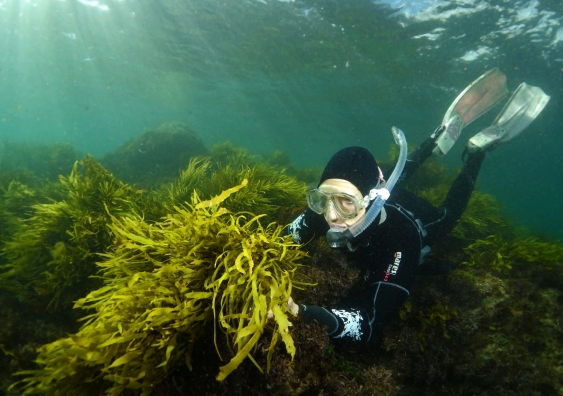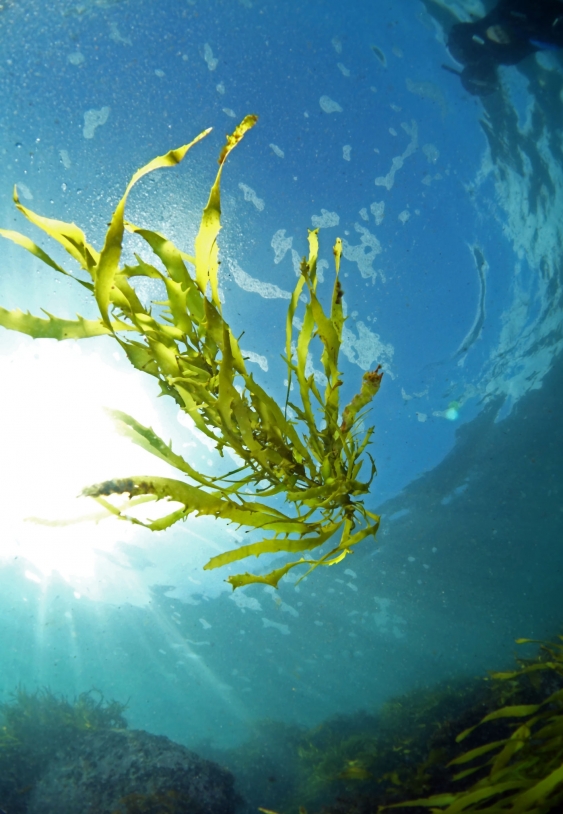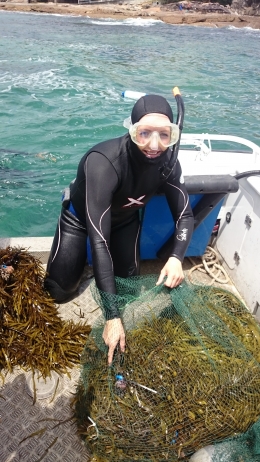Plant an underwater tree this Christmas
UNSW scientists are asking for help to restore Sydney’s lost underwater forests this Christmas and provide food and shelter for some of our most important marine animals.
UNSW scientists are asking for help to restore Sydney’s lost underwater forests this Christmas and provide food and shelter for some of our most important marine animals.

Wendy Frew
UNSW Media Office
9385 2481
w.frew@unsw.edu.au
UNSW scientists are asking the public to help restore Sydney’s lost underwater forests this Christmas and provide food and shelter for some of our most important marine animals.
A team from UNSW’s Centre for Marine Bio-Innovation and the Sydney Institute of Marine Science is launching ‘Operation Crayweed’ to encourage people to “become an underwater gardener” and help restore algal forests that vanished from the city’s coastline 30 years ago.
Essentially, we are asking people to sponsor individual ‘trees’ that we will transplant onto the reefs on their behalf. It’s a perfect Christmas gift to the environment,
The disappearance of the once-thriving seaweed species – crayweed (Phyllospora comosa) – is thought to be linked to the discharge of poorly treated sewage too close to Sydney’s beaches in the 1970s and ‘80s.

Plant an underwater tree this Christmas. Photo John Turnbull - www.marineexplorer.org
Despite very significant improvements in water quality since the 1990s, this large and important seaweed has not returned.
However, after more than eight years of research, the scientists have developed a method of transplanting fertile adult crayweed plants onto ‘deforested’ reefs, where they are reproducing to create new, self-sustaining populations.
The method, implemented at three sites at Cape Banks, Little Bay and Long Bay, has been so successful the researchers now want to scale up the project and bring crayweed back to a 70km-stretch of coastline between Palm Beach and Cronulla. They are now initiating a crowdfunding campaign to help fund their efforts.
“Seaweeds are the ‘trees’ of our oceans, providing habitat, food and shelter for other marine organisms,” explains marine ecologist and crowdfunding campaign leader Dr Adriana Verges, from UNSW’s School of Biological, Earth and Environmental Sciences.
“When these forests disappear, it’s a sign that something has gone fundamentally wrong and diverse marine communities and economically important species such as rock lobsters and abalone disappear too.”
Our results suggest that we can bring about the recovery of underwater forests on Sydney’s reefs, with the end result being enhanced biodiversity and increased recreational fishing opportunities.
While the researchers believe they can fully restore the marine habitat, replanting the underwater crayweed forests is expensive.
To replant the 70km-stretch of coast, some 7,000 individual ‘trees’ are required.
“Each crayweed will be tied to a biodegradable mesh that is fastened in place on reefs at about 2 to 3 metres depth,” explains lead researcher Dr Ezequiel ‘Ziggy’ Marzinelli. “But while we want to make sure the transplanted adult crayweed survive, we care even more about these crayweeds reproducing, because that’s how self-sustaining patches start up.”

UNSW marine scientist Alex Campbell preparing the crayweed for replanting at Sydney's Long Bay. Photo: Steve Offner
The researchers hope shoppers searching for unusual and sustainable gifts this Christmas will donate $20 to plant ‘an underwater tree’, $50 to create a little family unit that can procreate or $500 to plant a forest. The end goal in this first stage of the crowdfunding campaign is to raise $20,000 via the crowdfunding platform Pozible.
“Essentially, we are asking people to sponsor individual ‘trees’ that we will transplant onto the reefs on their behalf. It’s a perfect Christmas gift to the environment,” says campaign scientist Dr Alexandra Campbell. “We will also be approaching corporations to give larger amounts.”
SEA LIFE Sydney Aquarium & Manly SEA LIFE Sanctuary have swung behind the campaign via onsite displays to showcase Operation Crayweed's successful restoration work.
The aquariums will be displaying special tanks with crayweed and the important species it supports – crayfish (rock lobster) and abalone – and will invite guests to sponsor underwater trees over the Christmas and holiday period.
“This is one of those rare things – an environmental good news story, just in time for the festive season,” says project co-leader UNSW Professor Peter Steinberg, Director of the Sydney Institute of Marine Science.
“But it’s also important science. This kind of restoration study has rarely been done in these seaweed-dominated habitats, particularly at the scale of an entire metropolitan coastline, but our results suggest that we can bring about the recovery of underwater forests on Sydney’s reefs, with the end result being enhanced biodiversity and increased recreational fishing opportunities.”
While the project is limited to Sydney’s coastline for now, the researchers believe their method could be applied to marine restoration projects in other sites in Australia and globally.
To plant your underwater tree this Christmas visit the Pozible website.
Learn more about Operation Crayweed here.
Read more in the Sydney Morning Herald and ABC Online.